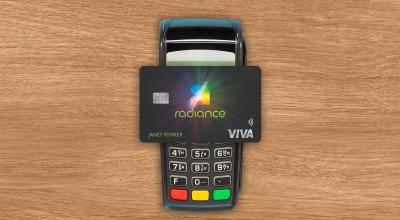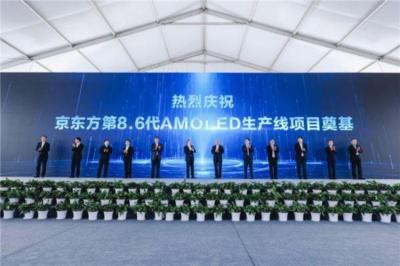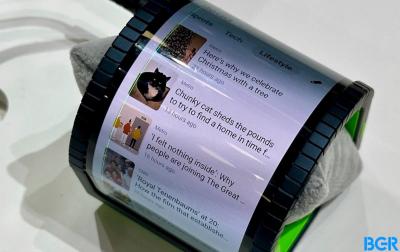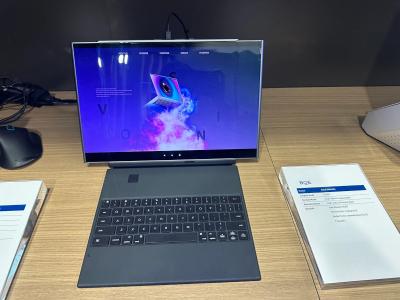OLED is an emerging display technology that enables beautiful and efficient displays and lighting panels. OLEDs are already being used in smartphones, laptops, wearables, tablets and TVs, and many of OLEDs are flexible ones.
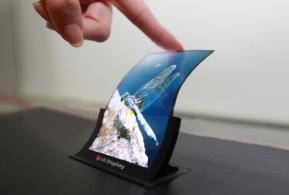
A flexible OLED is based on a flexible substrate (usually polyimide). The first generation of OLEDs produced on these were not really flexible from the user perspective. The device maker bends the displays, or curves it - but the final user is not able to actually bend the device. These first-gen flexible OLEDs are adopted many premium smartphones, for example the Samsung edge-type Galaxy phones or Apple's latest iPhones. A plastic-based OLED has several advantages especially in mobile devices - the displays are lighter, thinner and more durable compared to glass based displays.
Second generation flexible OLED displays can be bent by the user - these can be used for example to create foldable smartphones - the first range of which started shipping in 2019 and today these are quite popular. Rollable OLEDs are likely to enter the market soon, offering the ability to create scrollable devices. In 2019, LG launched the world's first rollable OLED device - the 65" Signature OLED TV R but in 2024 it discontinued this device as its price was too high for consumers.
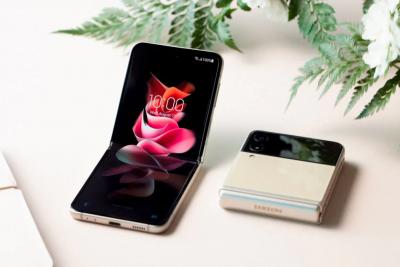
Where to buy flexible OLEDs?
While several companies (including Samsung, LG, BOE and others) are producing OLED displays, it is not straightforward to find a good and reliable supply of these displays.
If you are interested in buying a flexible OLED panel for your project or device, look no further. Our OLED Marketplace offers several flexible OLEDs, which can be ordered through us with ease.
Tianma shows its latest OLEDs and MicroLEDs at Displayweek 2024
China-based Tianma had an impressive booth at Displayweek 2024, showing numerous OLED and microLED displays and prototypes.
For the automotive market, Tianma showed three new display prototypes. First up is a 13" slidable OLED, with an embedded touch panel, aimed towards car dashboards or center controls.
BOE shows new OLED displays at SID Displayweek 2024
BOE had a large demonstration at Displayweek 2024, showing several display technologies and many new panels and prototypes.
First up we have a slidable OLED display, one of the largest we've seen, at 31.6". The display offers a resolution of 5944x1672, a sliding distance of just over 260 mm (BOE says its the world's longest) and a sliding radius of 5 mm.
LG Display shows its latest OLED displays at Displayweek 2024
LG Display demonstrated its latest OLED display prototypes and commercial panels at Displayweek 2024. The company showed flexible panels, automotive displays, transparent OLED, gaming monitors, a 10k nit microdisplay and more.
So first up, LG Display shows its automotive Advanced-Thin-OLED (ATO) displays, which are produced on glass substrates and use a tandem structure. These OLEDs are lower in cost compared to LGD's flexible automotive p-OLED panels, but still enable low-weight and thin profile, and the excellent image quality of an OLED display. The smaller display was a 12.3" 2400x900 (209 PPI) 1,000 nits panel, while the other panel was larger at 17" 1920x2560 (188 PPI).
Samsung shows its latest OLED and QD-EL displays at Displayweek 2024
Samsung Display had a rather large booth at Displayweek 2024, showing its latest OLED displays and technologies. Samsung showed several displays - including foldable smartphone panels, laptop and tablet displays, two QD-OLED displays, its 9.4" round automotive AMOLED, and more.
One interesting display was a panel that combines a foldable and a rollable display, that can open up to an impressively large display. Samsung brands it as a Flex Note Extendable Display.
First impressions from SID Displayweek 2024
The display industry's premier event, Displayweek, is over. We will now collect our notes, thoughts, photos and images and will share it all in the coming days. In the meantime, we'd like to detail some initial impressions.
Generally speaking, it seems as if the display industry is going through a phase of relatively little innovation, especially with the mature LCD and OLED industry segments. While it has been a very busy week, and attendance at the event seems high, the number of actual demonstrations and prototypes was not stellar and compared to previous years, the booths were smaller and some companies skipped the event this year or preferred to only show their latest displays in private settings. Some thoughts we have:
Sentry Enterprises launches an illuminated credit card platform with a flexible OLED lighting panel produced by Konica Minolta
In 2014 Konica Minolta started constructing its groundbreaking R2R flexible OLED lighting fab. The project saw many delays and entered production later than planned, and KM started producing panels at low volume at around 2020. The company recently started to ramp up production, and today we hear of one of its first customers and partners, Sentry Enterprises.
Sentry, a fintech company, launched the Radiance card illumination platform, which enables credit card (and other payment card) issuers to offer a unique experience by using an OLED lighting panel embedded in the card. The OLED panel is produced by Konica Minolta. The card works without a battery, and the OLED panel is powered by the NFC receiver upon a transaction (a technology that was demonstrated by KM back in 2020).
BOE starts constructing its 8.6-Gen IT flexible AMOLED line in Chengdu
Towards the end of 2023, BOE officially announced its plans for a 8.6-Gen flexible LTPO AMOLED line in Chengdu. The agreement with Chengdu's local government was signed in early 2024, and now BOE started to construct its new production line.
The total investment in the fab is expected to reach 63 billion Yuan (over $8.7 billion USD). The fab will have a capacity of 32,000 monthly substrates (2290x2620 mm), and is expected to begin production by Q4 2026 (total construction time will be 34 months, according to the plan).
Samsung shows its latest flexible, foldable and rollable OLED prototypes
Last week Samsung Display showed its latest flexible OLED prototypes, with some impressive new displays. We'll start with the OLED Cling Band, a sort of wrist smartwach that wraps around your hand.
Samsung also showed a 17.3" foldable laptop display, a rollable and foldable device (Rollable Flex) that is 12.4" when fully opened, tri-folded displays and more. These are not new displays, but it is clear that Samsung is pushing forward with its flexible display technology to new designs.
Samsung announce a new Flex Magic Pixel technology for enhanced OLED privacy
Samsung Display demonstrated a new technology it brands as Flex Magic Pixel, that adjusts the viewing angle of the flexible OLED screen so that it is not visible to the person next to it. Samsung says that when this technology is combined with the proper AI technology, can be used to enhance the security of smart devices.
Samsung gives a use case example - when a smart device user runs a banking application in a public place, AI technology can automatically recognize the environment and initiate additional security features. The company's new Flex Magic Pixel enables the introduction of dynamic OLED privacy. Samsung Display is showing the new application at MWC 2024.
BOE shows a dual-slidable laptop AMOLED display
Pagination
- Page 1
- Next page

